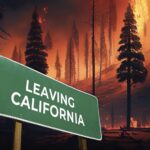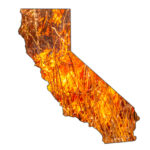Why is wildfire risk such a challenging area for insurers and communities?
Executive Summary
Nancy Watkins, Frank Frievalt and Dave Winnacker are leaders of a strategic alliance formed to address wildfire risk to communities in the wildland-urban interface (WUI).In this Q&A-style article, Watkins, who is a consulting actuary, interviews Frievalt and Winnacker, who are experienced as fire chiefs in California, about their views on what insurance actuaries and insurers should know about wildfire risk today, how they can work with fire professionals and other stakeholders to navigate insurance market disruptions and to drive down wildfire risk in the WUI.
As fire chiefs, we are regularly asked about the increasing challenges our residents experience when seeking insurance in areas with wildfire risk. As we started digging into the question of how the insurance industry views risk, we realized that our communities are getting very different messages from the fire service, insurers and policymakers.
The confusion, uncertainty and conflict surrounding wildfire risk to communities is an artifact of applying trusted legacy strategies beyond their ability to predict outcomes in the wildland-urban interface (WUI).
The gap between actual WUI risk on the ground and legacy risk management strategies has created a condition of insurance market arrhythmia and public policy fibrillation. Despite widespread agreement that the status quo is unsustainable, the lack of a cohesive strategy is creating erratic and at times desperate activity. While there is a great deal of well-intentioned activity in this space, it is failing to produce an effective heartbeat of market and policy practices.
































